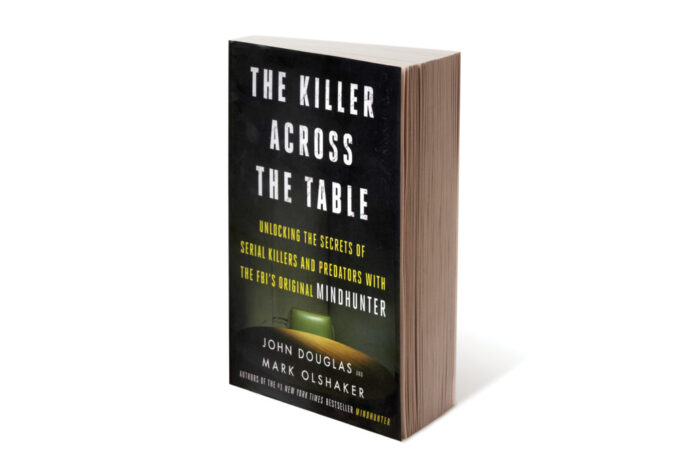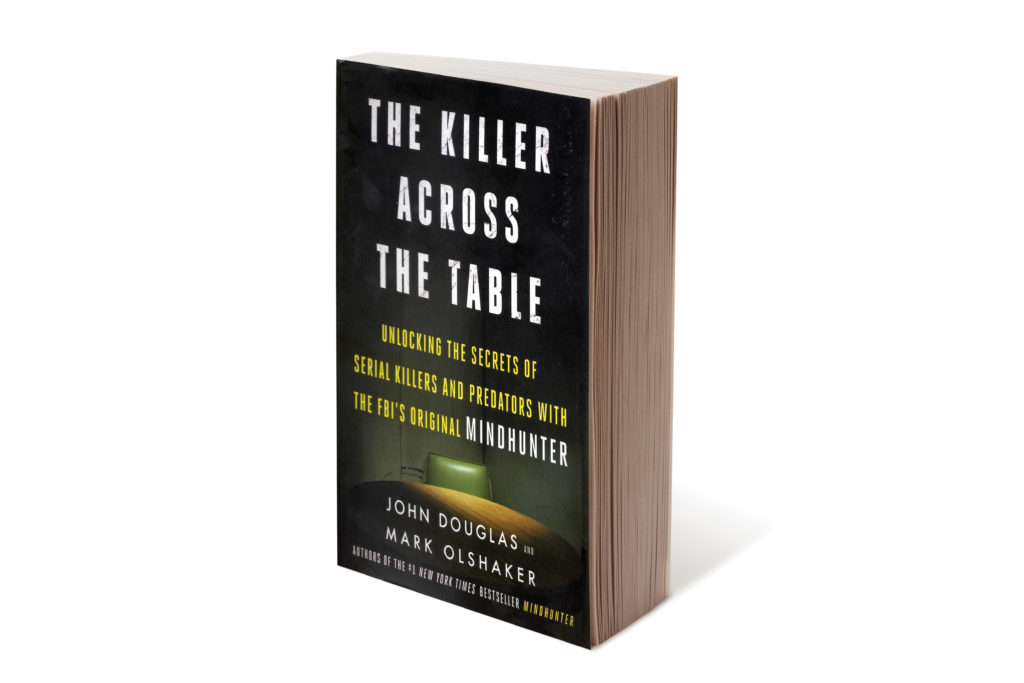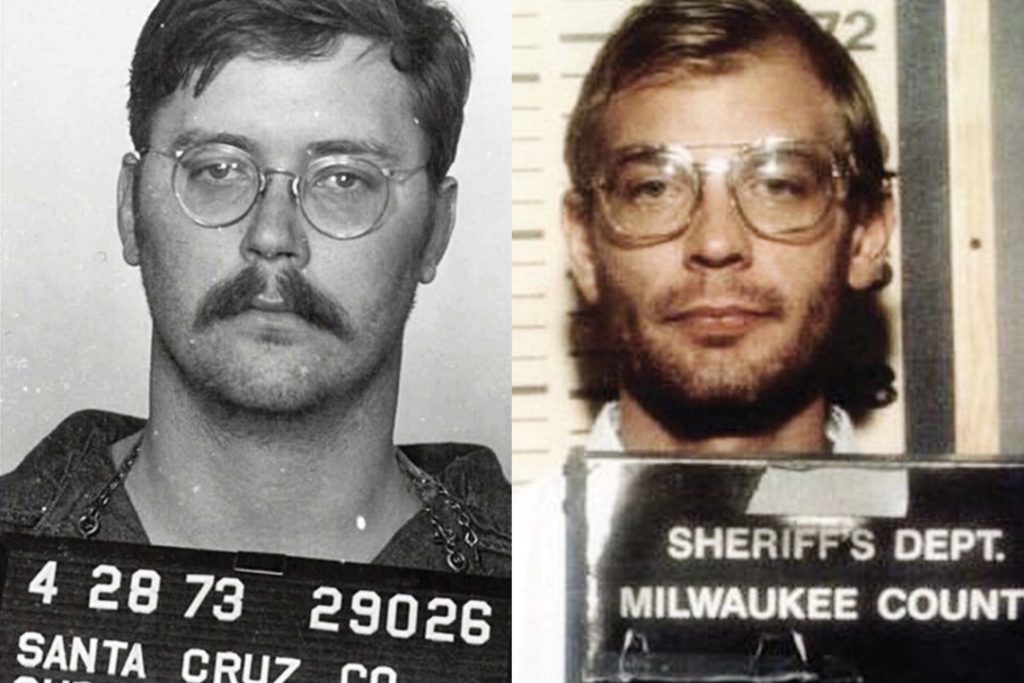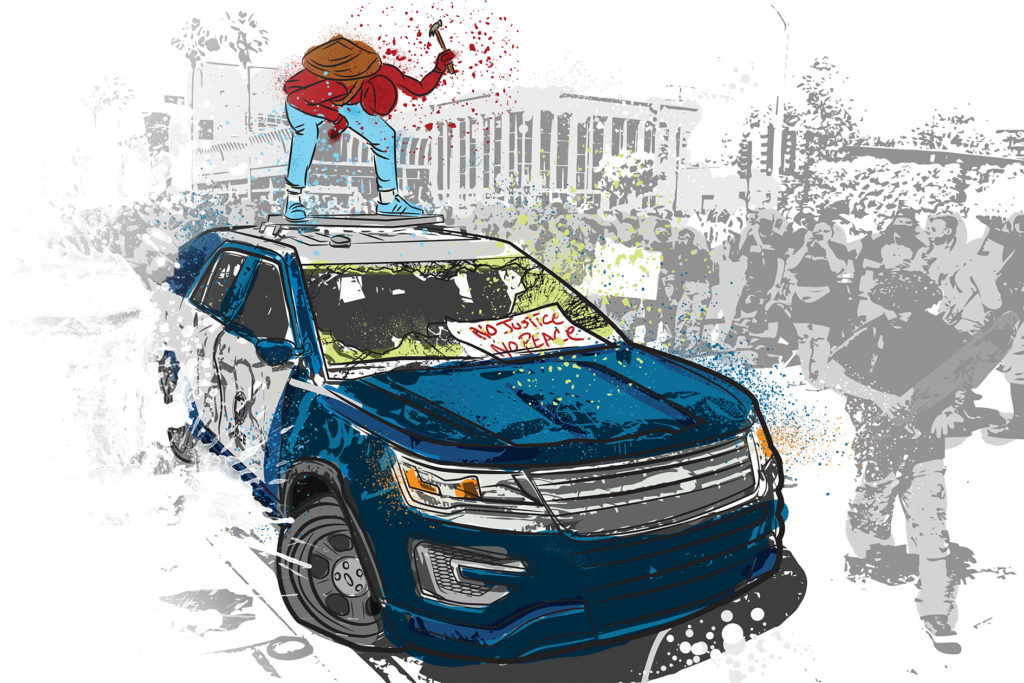Premise: Criminal profiling has come a long way over the last several decades, both in terms of its investigative methods and prominence in pop culture. One name that stands out in this area of study is John Douglas. His FBI career not only brought him face to face with some of the most notorious criminals in recent history, but his pioneering research in the field of criminal profiling has made him an esteemed lecturer, consultant, and author. The Netflix series Mindhunter is based on Douglas’ extensive work.
His most recent book, The Killer Across the Table, compares and contrasts four different murderers to provide greater insight into what makes violent offenders tick. Douglas immerses us in his interrogative world to help better understand whether killers are born or made when examining their motives, rationale, and childhood. The author also parallels the anatomy of these crimes and their perpetrators to his experiences with other prolific criminals such as Charles Manson, Edmund Kemper,
Dennis Rader, and Gary Heidnik, among others. We’re treated to a front-row seat of how a malignant desire for power goes from conception to conviction. As Douglas says, there’s “one universal among all serial killers and violent predators: Other people don’t matter, they aren’t real, and they don’t have any rights.”
The 411: The Killer Across the Table is divided into sections on each individual profiled, walking us through their crimes, how they were ultimately caught, and their own interpretations of what they’d done. Douglas recounts his chilling interviews with these men while simultaneously providing an analysis of their behavior and pathology. The first criminal evaluated is Joseph McGowan, a schoolteacher who killed 7-year-old Joan D’Alessandro when she came to his mother’s house selling Girl Scout cookies. The second is Joe Kondro, a drug addict and drifter who killed several young girls who were children of friends and acquaintances. The third is Donald Harvey, who may have killed as many as 87 patients at hospitals he worked in over a 17-year stretch. The last is Todd Kohlhepp, a real estate broker who killed several people he felt had betrayed or insulted him.
The book is rife with intuitive passages that distill the thought process of these criminals and explain why, in most cases, rehabilitation after their crimes have already begun is practically impossible. We see how patterns in these killers’ lives contributed to who they became and why. Douglas shares classic indicators that murderers often exhibit when their violent tendencies are still evolving, such as the “homicidal triangle” — fire-starting, cruelty to animals or people, and chronic bedwetting.
The author also reveals common ploys often seen by criminals to manipulate their trial or parole hearings, and the dichotomy between criminal insanity versus conscious choices within that narrative. He goes on to discuss loopholes in the judicial system’s evaluation process that enabled, or could’ve potentially enabled, dangerous criminals to be set free. Douglas describes how killers often participate in searches for victims and have premeditated their crimes so carefully that they’ve formulated strategies to misdirect suspicion away from themselves. “Predators may look and sound and often act like we do, but they don’t think like we do. Their logical process is completely different,” Douglas says.
The Verdict: As the reader, you feel like you’re sitting in the room with Douglas during his interviews. For those who wince easily at descriptions of violent acts, this book may be a bit too intense. Douglas does a very professional job of keeping the tone conversational and empathetic; however, in order to understand these crimes, we must wade deep into the waters of visceral discomfort. Douglas has numerous other books, both on criminology as well as fiction, but for those who want to understand the mentality of a murderer, this is an excellent place to start. You’ll walk away a bit more confident in knowing why there are insidious people who, in their own way, are profilers looking to detect and exploit the vulnerability of potential victims. Works like Douglas’ serve as important tools on how to recognize and protect yourself from society’s criminals.
Book & Author
The Killer Across the Table: Unlocking the Secrets of Serial Killers and Predators With the FBI’s Original Mindhunter
By: John Douglas and Mark Olshaker
Publisher: Harper Collins
MSRP: $17 paperback (Purchase here on Amazon)
URL: mindhuntersinc.com
Pages: 352
Rating:
- THRIVE
SURVIVEDIE
OFFGRID LIBRARY OF RECOMMENDED BOOKS
- Tactics and Firearms
- Two Person Close Quarters Tactics by Special Tactics
- On Combat by Lt. Col. Grossman.
- The Irish Republican Manual of Guerrilla Warfare
- 100 Deadly Skills by Clint Emerson
- Skillsets and DIY
- Visual Guide to Lock Picking, 3rd Edition
- Primitive Technology Survivalist Guide Book by John Plant
- 101 Skills You Need to Survive in the Woods by Kevin Estella
- The Survival Medicine Handbook by Joseph & Amy Alton
- Bushcraft by Mors Kochanski
- Novels and Literature
- The Final Day by William Forstchen
- The Savage by Frank Bill
- Scenarios and Survival
- Lights Out by Ted Koppel
- Waste Land by David T. Hanson
Related Posts
The post Book Review: “Killer Across the Table” by John Douglas and Mark Olshaker appeared first on RECOIL OFFGRID.












